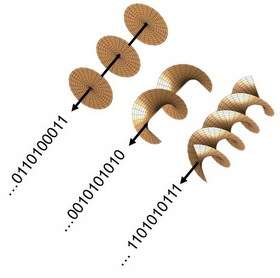Research boosts optical fiber data speeds

In the latest advance to boost the speed of the Internet, a research team including, the City College of New York, University of Southern California, University of Glasgow, and Corning Incorporated, has demonstrated a way to increase the data speeds of optical fibers - considered the Internet's backbone.
"Optical fibers can be sped up by 'twisting' data; multiple data streams are transmitted and received as different twists of light," says Giovanni Milione, a City College doctoral student at the time. "Thought impossible using standard optical fibers which untwist the data, corrupting it, we showed that if the data was digitally re-twisted, after it was received, it could be recovered."
To digitally re-twist the data, the researchers borrowed a well-known technique of radio communication, referred to as 'MIMO,' used by cell phones and Wi-Fi routers every day. "Light's twists were treated like antennas," Milione explains. "Even if transmitted data was untwisted, it was received as a different twist (antenna) and recovered."
As a proof of principal, the researchers successfully transmitted four data streams on four twists of light over 5 kilometers of standard optical fiber. A key to their experiment was a University of Glasgow-made device that separates and combines light's twists as a prism does color.
"This development could offer a solution to the insatiable needs of data-driven social media, such as, Facebook and YouTube, which continually push optical fiber data speed limits," said Distinguished Professor of Physics Robert R. Alfano.
Provided by City College of New York


















